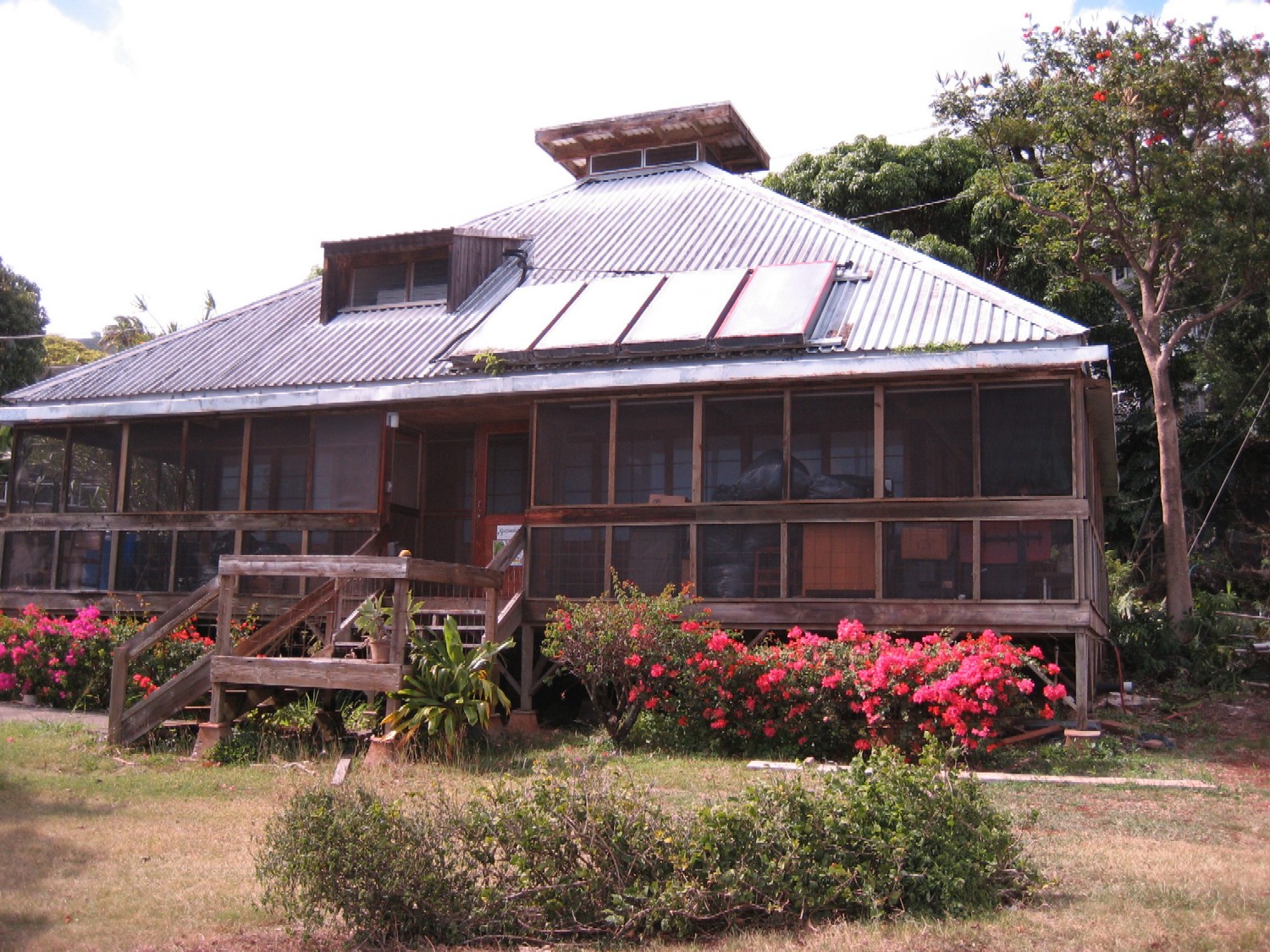
The Energy House
The Energy House was constructed in the 1970s, and for a considerable period of time people lived in it. During this active period, some 12,000 visitors toured the house and learned about sustainable living. The house included a water catchment system for irrigating a food-producing garden, a solar water heater to reduce dependence on electricity, and natural lighting and ventilation so that the need for electricity for air conditioning and lighting would be eliminated or minimized.

After three decades, the time has come for its complete renovation. The energy-efficient technologies of 30 years ago have been superceded by more efficient generations, or completely new ones, many of which could be installed so that once again, the University of Hawaii at Manoa will have a live demonstration of the usefulness energy efficiency in a fully-functioning residential structure (i.e. a house!.) Such a project is also a learning opportunity for students, particularly in such disciplines as architecture and engineering, to get some hands-on experience with renovation, energy-efficient deisgn, and energy technologies.
The following is a short list of possible upgrades, new appliances, and other equipment that are being contemplated as part of making the Energy House again a showcase for sustainable living:
This is a considerable list of projects and purchases, which will require a sustained fundraising effort to complete. Some of these projects are likely to be complex. For example, a system to catch and hold water from the roof means new gutters have to be installed (see below) and the old water-collection tank will need to be replaced.

